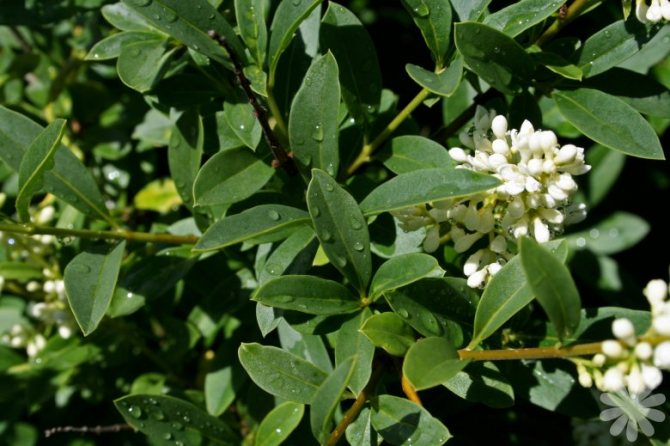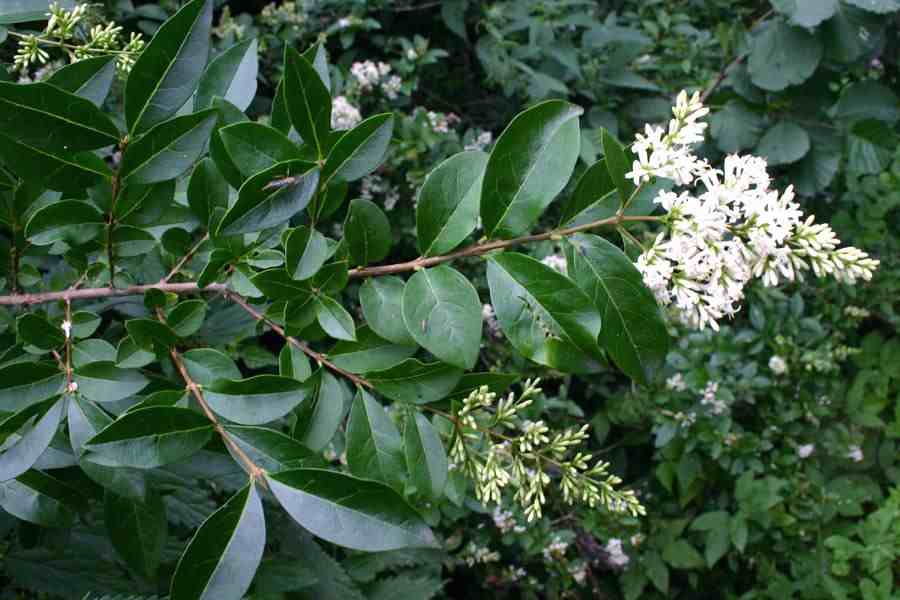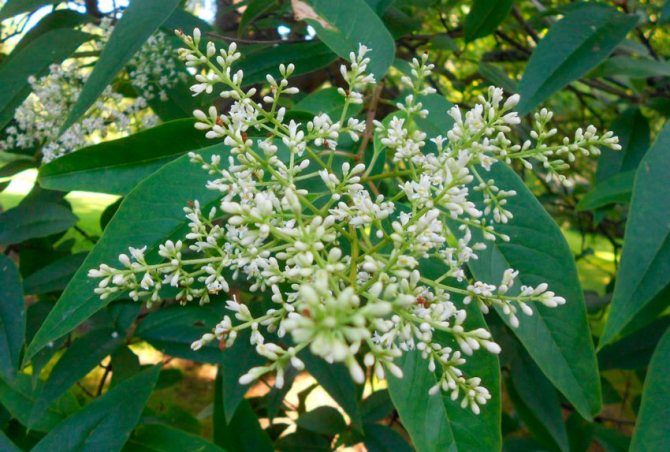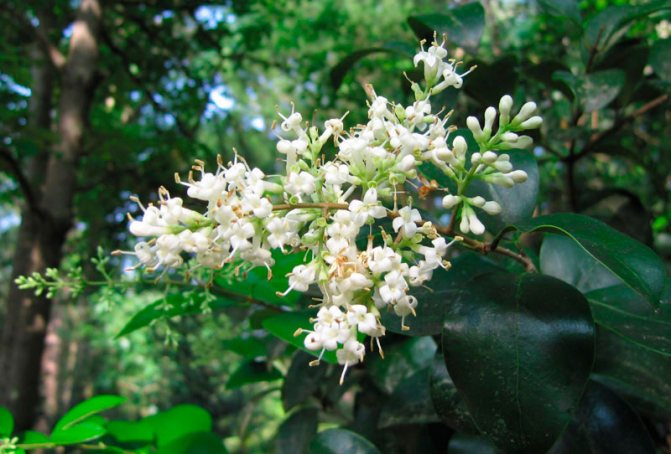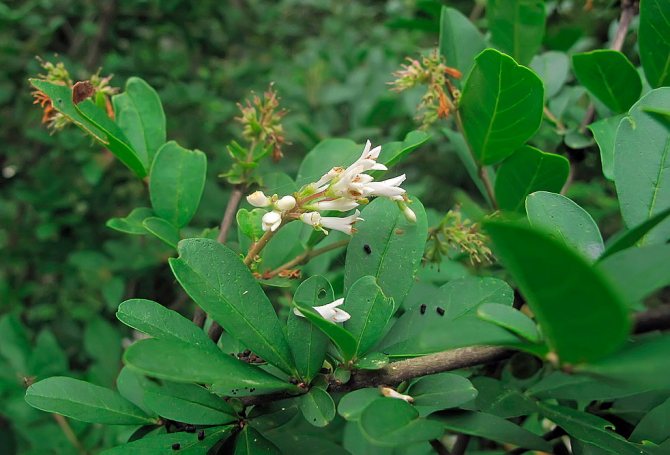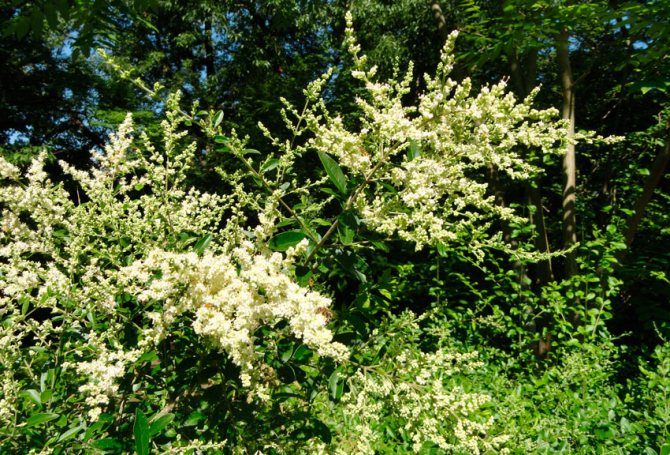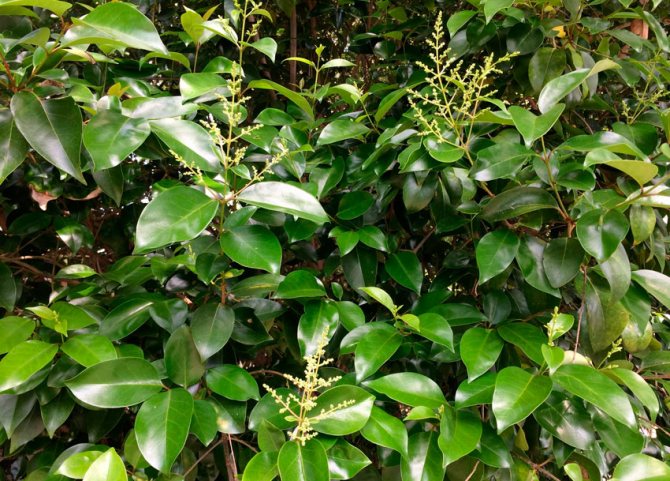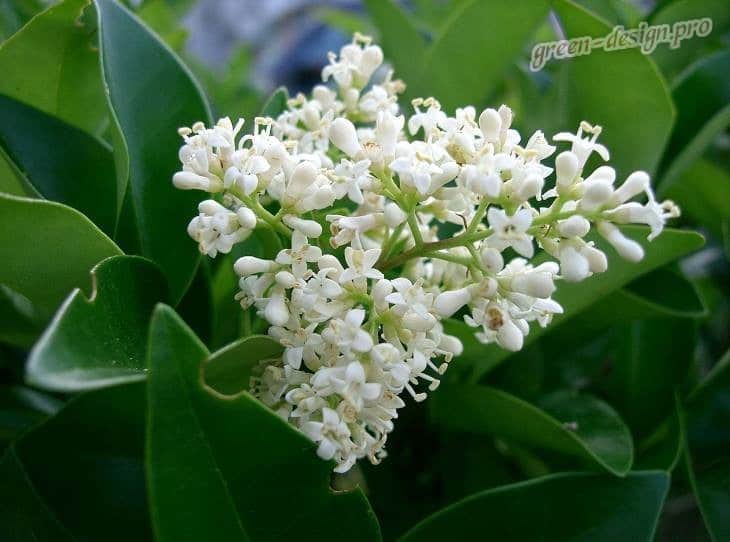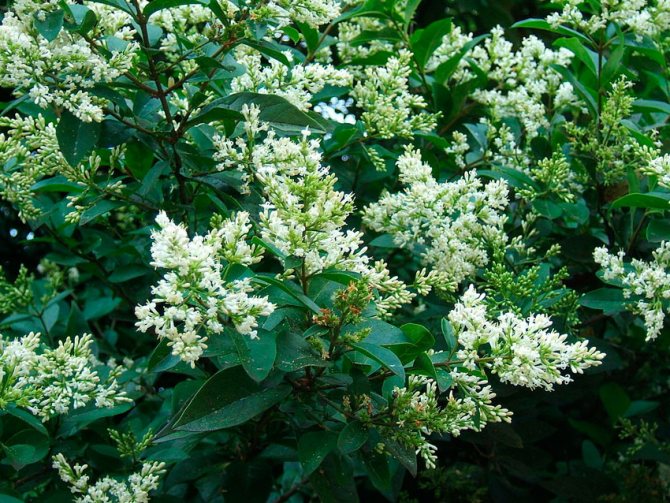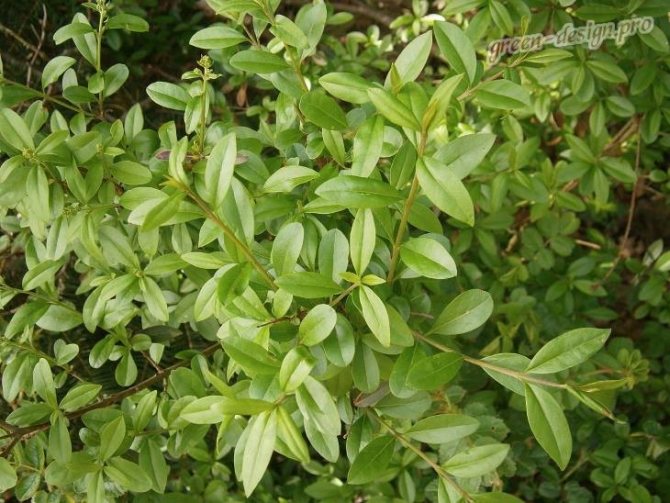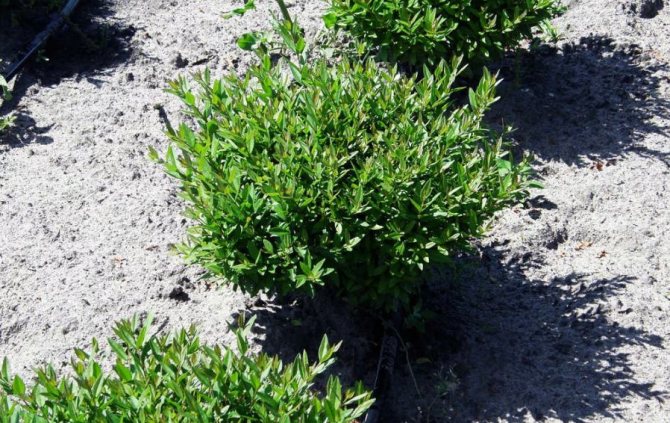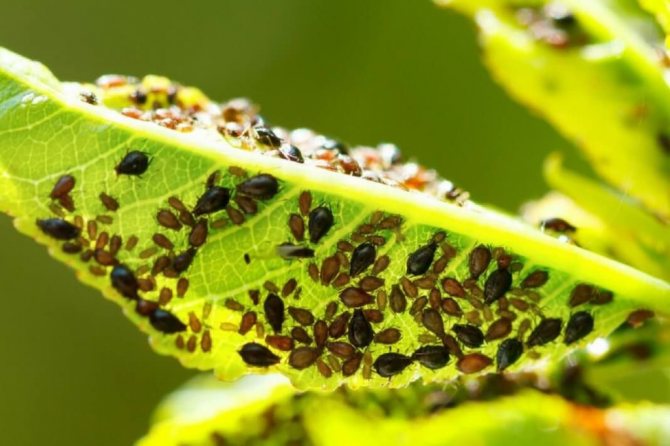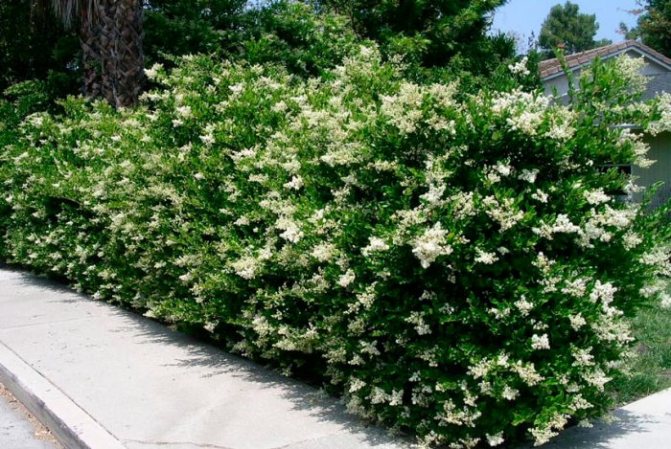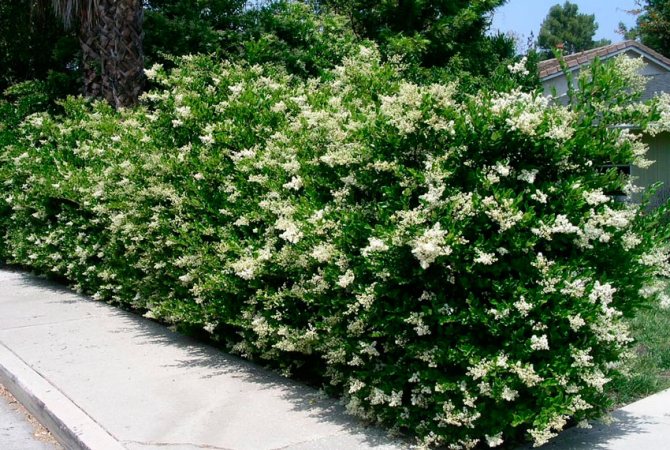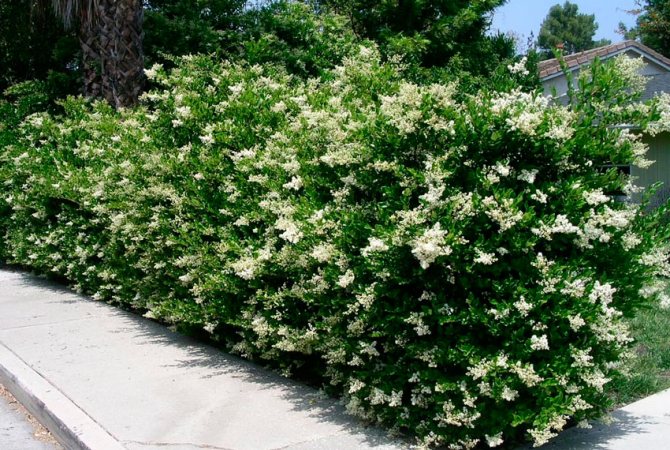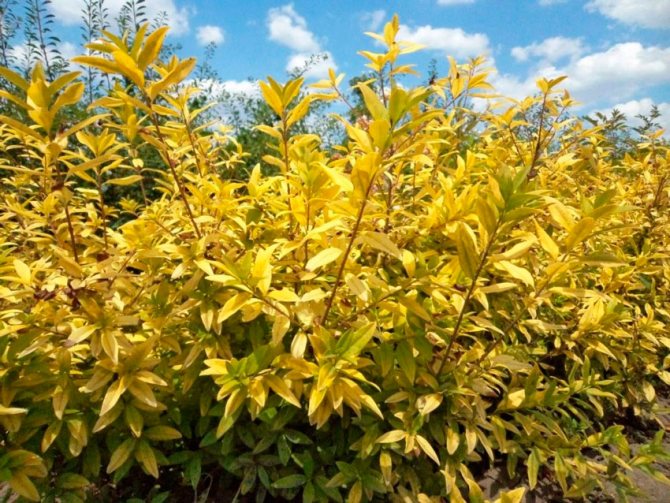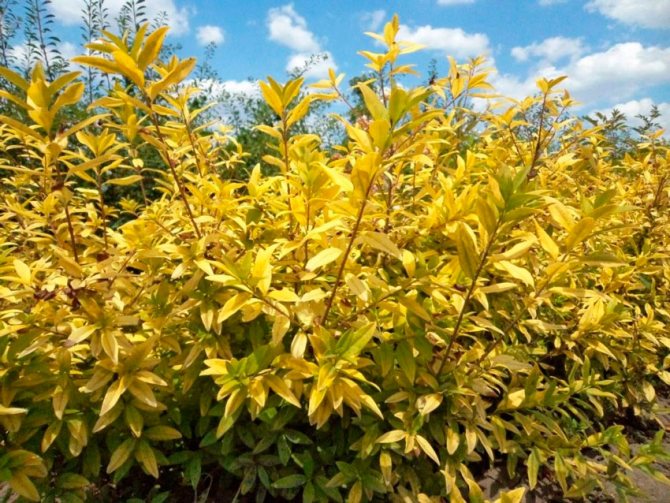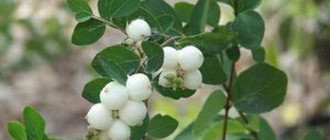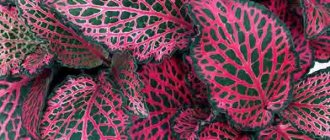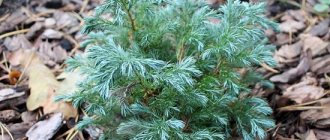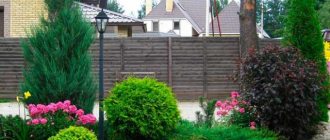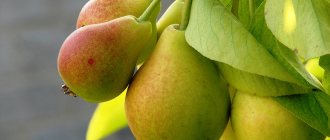Common privet attracts not only by its appearance, but also by its unpretentiousness. For cold climates, its deciduous appearance is suitable. In height, it can reach up to 4 meters. But it grows very slowly and it will take many years to achieve such dimensions. The crown is wide, naturally asymmetrical. Flowering begins in early June and lasts 1.5 months. The aroma of racemose inflorescences is sharp and specific. By autumn, they turn into black poisonous fruits, and the color of the leaves acquires a bright color - yellow-green.
- Seeds
Common privet, its varieties and varieties
The Olive family includes an extensive range of evergreens. The evergreen shrub common privet (ligustrum) also belongs to it.
In nature, culture grows in the southern regions of Russia and East Asia, on the Australian continent and in North Africa, as well as in Australia, Japan, and China.
The shrub has small, hard, leathery, glossy leaves. Ligustrum blooms with panicles of white small flowers that have a pleasant aroma. After flowering, bluish-black fruits are tied, which can overwinter on the bushes.
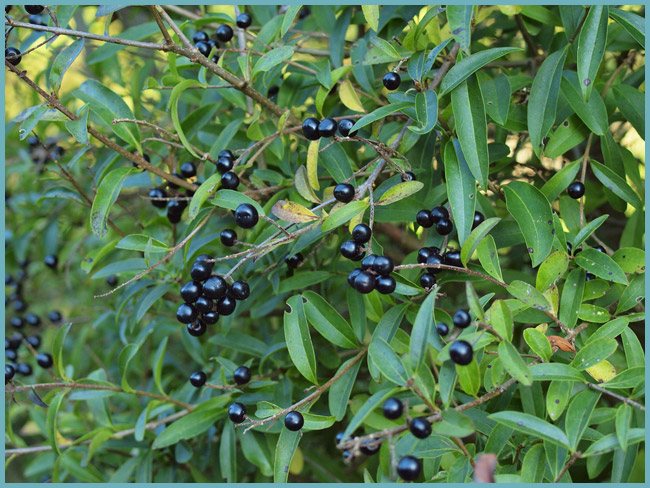
Privet fruit
In height, the bushes of common privet reach 3 meters, the width of the bush can be more than 1 meter.
There are three types of common privet:
- Deciduous - drops leaves in cold climates.
- Evergreen cultivars - winter with non-falling leaves.
- Mixed - leaves partially fall off the bush.
The plant is widely used in landscape design to create hedges, it is characterized by a rather slow growth. During flowering and fruiting, privet bushes acquire additional decorative effect.
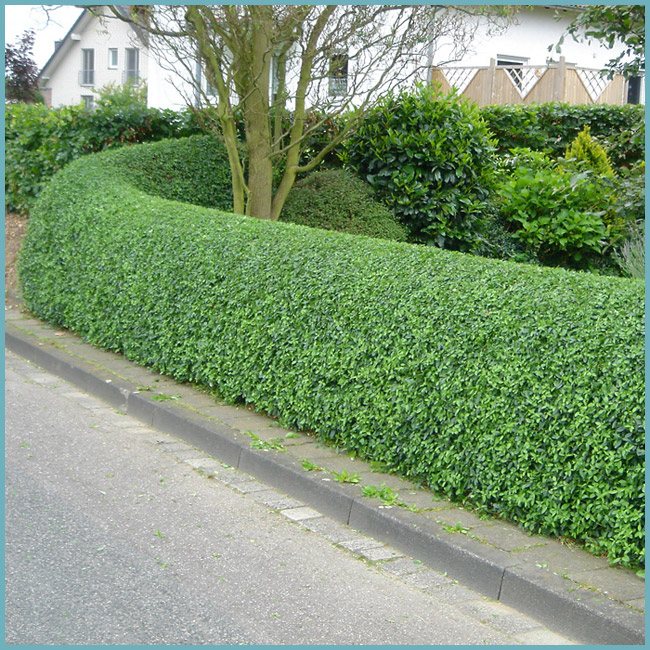

Privet is great for creating hedges
Landscape decorative forms (ball, cone) are easily formed from ligustrum, but the plant does not develop quickly; it takes a long time to create an ideal compositional form. A photo of privet bushes formed in the form of a ball attracts attention - the plant looks very decorative.
The following are popular privet varieties ordinary:
- "Aureum" - reaches a height of 1.5 m, green leaf blades with golden edging. A sunny location is required for the full manifestation of the decorative color; when grown in the shade, the leaves will lose their yellow border. The variety is quite winter-hardy, requires shelter only in very severe winters.
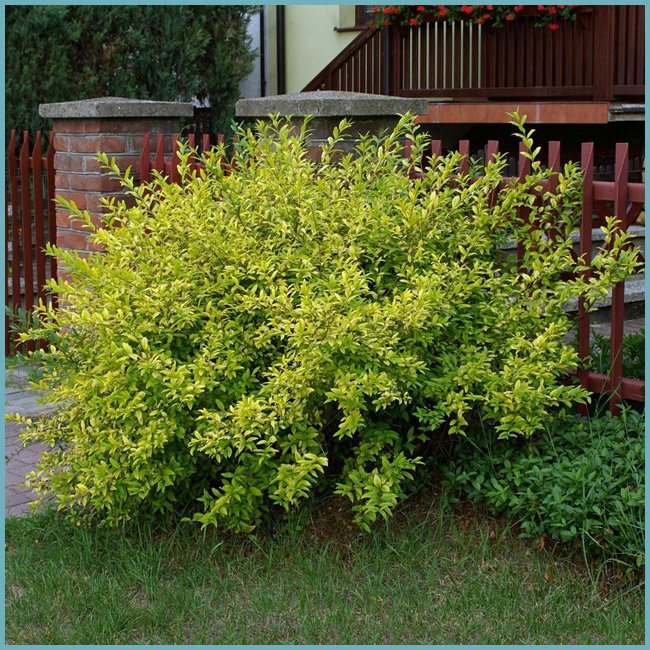

Aureum cultivar
- "Glaucum" - the variety does not grow higher than 1 m. The crown of the bush is spreading, the leaves are narrower than those of other varieties, have a bluish bloom and white edging.
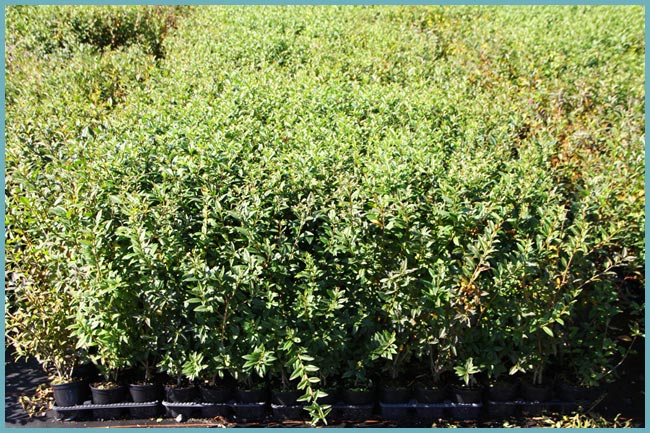

Glaucum cultivar
- "Atrovirens" is distinguished by its considerable size and dark color of leaves without spots and bordering with other flowers.
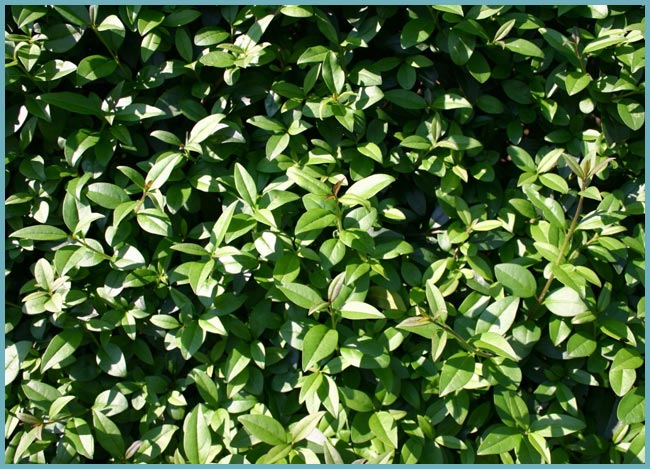

Atrovirens cultivar
Chagarnik privet description
Privet - chagarnik zavvishki close 2 m and zavshishki up to 1 m or small trees with a rosy crown, but the growth is not 6 m. ...Small stocks, bile, or even sedentary boxes, pick up in the puffs of the top of the head, from 6 to 18 cm, the color of a stretch of three months, repaired from the worm or lime. The fruits of privet are berry-like other rounds of the custard of a dark blue color with a small number of nasin from the same to chotir. Zrostaє privet is duzhe shvidko. The most wintery type of dewline є the privet is zvychayna - її wake up and wander in the minds of the average smog. The very landing and looking at the privet privet, as well as the propagation of the privet privet and the subject of the whole statty. In landscape design, it’s great to see life from privet, I want to see wonderfully in small groups, and like a solo roselin. It will remain for an hour to increase the popularity of bonsa privet.
Planting privet by all the rules
It should be noted right away that privet is unpretentious. The culture grows well and develops even under unfavorable conditions: ligustrum is able to put up with a shady location, but does not tolerate acidic soil.
Advice! When preparing places for planting privet, a small amount of lime must be added to the soil.
The soil for planting shrubs should consist of humus and leafy soil, peat, coarse sand. It is necessary to immediately select a site for planting without excessive moisture, ensuring reliable drainage. Otherwise, the roots of the shrub will get wet, which will affect the overall development of the plant.


Planting privet bushes
In summer, ligustrum requires frequent watering, but without excessive overflow. By autumn, the volume of irrigation water is dosed, and the frequency of irrigation is reduced.
Attention! Privet is easier to put up with under-watering than over-watering.
Direct sunlight is necessary for varieties of ligustrum with variegated leaves, so the area for planting a crop should be well lit. It is undesirable to plant shrubs under mature trees, which have a formed dense and wide crown.
Separate pits are prepared for planting a bush, the depth of which depends on the development of the root system of the seedlings, but should not be less than 50 cm.
When planting a shrub, it is necessary to provide for the laying of prolonged-release fertilizers at the bottom of the planting pit.
Summary
Few have seen and know the photographs and descriptive characteristics of privet, because the popular name of this shrub is "Wolf berries". But in fact, the bush is an amazingly beautiful plant that can become a decoration of any territory. The shrub is used to create bonsai, in Japan the culture is used to make ikebana. In European countries, on a large number of sites, the shrub is used to form fences and hedges. However, privet is also often found singly. The plant is comfortably clipped, it is fast-growing, unpretentious to care, has immunity to most diseases. That is why privet has only more and more fans over the years.
Common privet care
Privet needs simple care:
- timely watering;
- weed removal;
- shelter in cold winters;
- applying the necessary fertilizers.
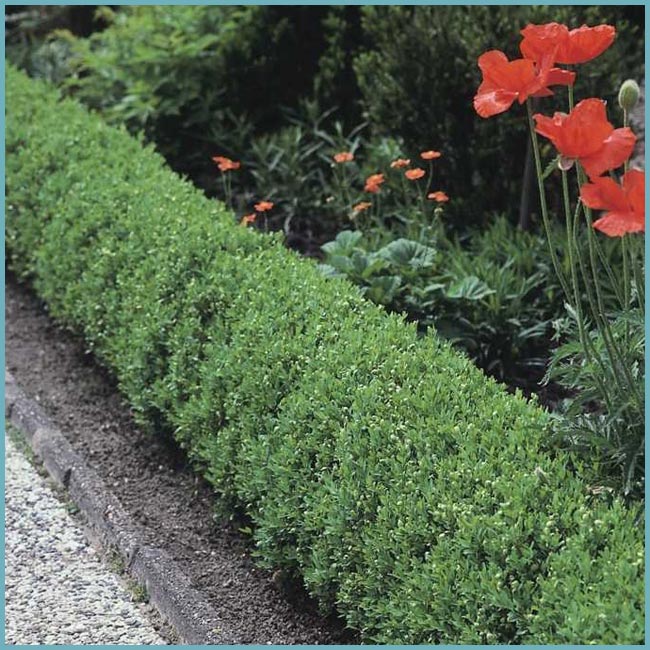

Take care of the privet shelter for the winter
The soil under the bush requires mulching (to prevent drying out) and periodic loosening (to improve aeration). When mulching the trunk circle, not only will moisture in the soil remain, but also the germination of weeds will decrease. In addition, mulch protects plant roots from overheating during particularly hot summer months.
In the winter cold, some varieties of plants can freeze out, so you should take care of the privet shelter in advance. Sometimes it is enough to cover the bushes with snow, but in especially harsh winters, spruce branches are laid on top of the snow.
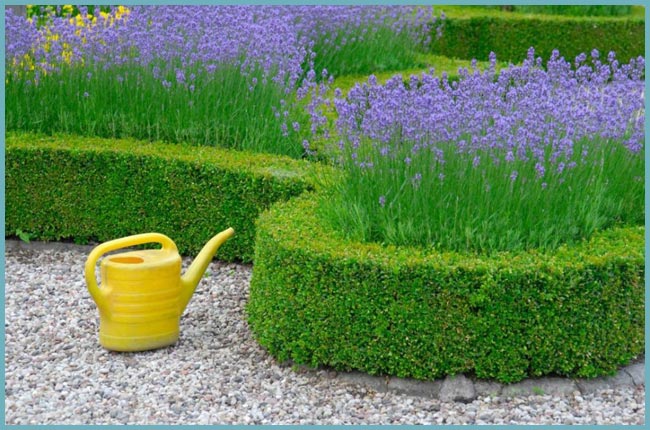

Privet in landscape composition
Separately, it is worth touching on the pruning of ligustrum bushes when forming volumetric forms. Although the crop does not grow very quickly, periodic pruning helps to form a sprawling, dense crown of the shrub. The first pruning of privet is cardinal - the branches of the bush are shortened almost to the ground. The following cuts maintain the shape of the bush, they are carried out up to 3-4 times per season.
Advice! Pruning of ligustrum bushes should be carried out during the growing season, before the onset of autumn.
Fertilizing ligustrum
To reduce the acidity of the soil under the privet bushes, it is useful to add chalk, lime, dolomite flour. Soil deoxidation is carried out with the onset of autumn, embedding lime in the soil. At the same time, it is useful to introduce potash and phosphorus fertilizers, as well as organic matter.
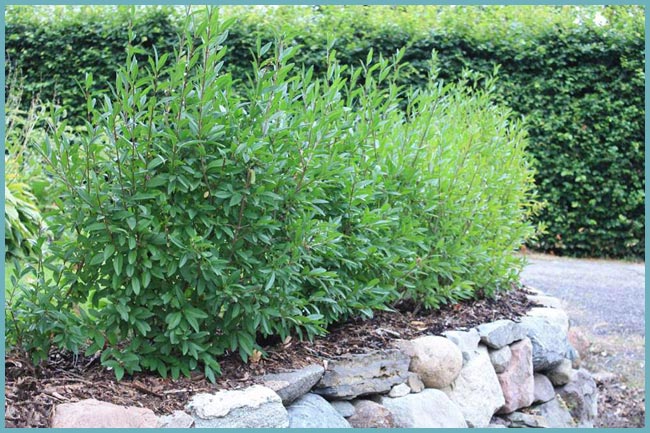

The plant needs feeding 2 times a year.
In summer, complex fertilizers are applied 2 times per season: foliar dressing with mineral fertilizers is carried out on the leaves. Take a look at the photo - timely fertilized privet bushes look very decorative and give good growth.
Types of borders
Geometric. The bushes are cut in the shape of a trapezoid with a taper at the top. With this pruning, the bottom of the crown is evenly illuminated. The narrowing should not be sharp so as not to be conspicuous.
The formation of the desired shape is carried out gradually, as the shrub grows. The protruding shoots are pruned first. In this way, the side and top faces are formed within five to six years.
Karikomi. This type of pruning is popular in Japan. The bushes are shaped like pillows. Several specimens planted side by side are combined into one rounded flat pillow.


Closed border. Such edging of decorative compositions is used for planting flower beds inside them.
From such compositions, mini-gardens are obtained, which have a special decorative effect.
Inside, you can have ground cover perennials, annual flowering species and even a coniferous garden.
Care consists of watering, fertilizing. A bucket of humus is introduced per running meter, adding evenly. Top of the humus is poured 10-15 grams of superphosphate. Fertilizers are embedded in the soil.
Top dressing privet, used as a hedge are essential. They increase decorativeness, since contribute to the intensity of color, abundant flowering, fruit formation and crown density. In June, it is recommended to add minerals in combination with nitrogen, and after a month - phosphorus and potassium.
At the beginning of winter, the curbs are covered with snow. They don't throw snow in the spring waiting for a gradual natural melting. This is necessary to moisten the soil. Bright, dense privet hedge greens, when properly cared for, and their lush bloom will be the undoubted decoration of your garden.
Reproduction of ligustrum - ways and methods
An ornamental shrub can be propagated in all known ways:
- Seeds - this method is used infrequently due to the low germination of seeds. The yield of young seedlings from freshly sown ligustrum seeds is about 60%. Prior to planting in the ground in a permanent place, privet seedlings are grown for 5 years.
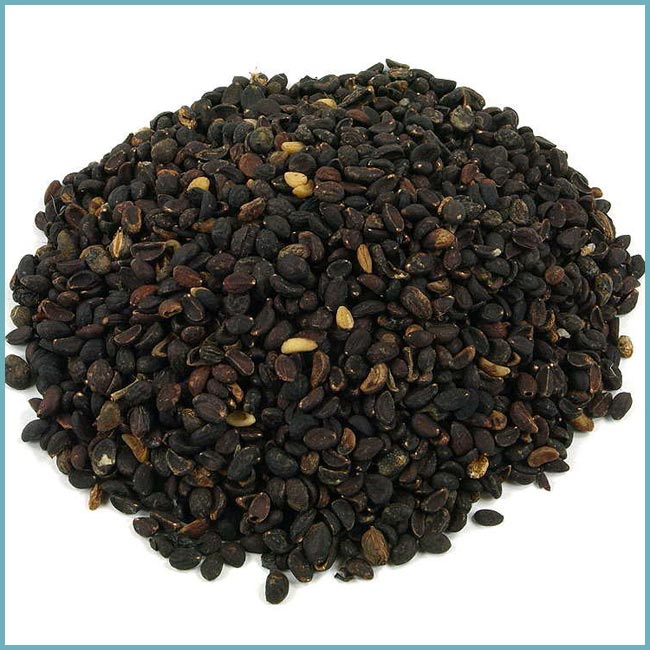

Privet seeds - Layers privet is bred during the warm period. The lower ripened branches of the plant are buried in a specially dug groove. By autumn, roots are formed at the nodes of buried branches, and shoots also grow. In the first year, the growth is very insignificant, therefore, young plants are not separated from the mother, but left to winter, covered with snow. In the second year, plants can be transplanted for growing in a special area.
- Cuttings bred shrubs if it is necessary to obtain a large mass of planting material. Matured branches are cut into cuttings with several living buds. Rooting is carried out in special greenhouses in light soil.
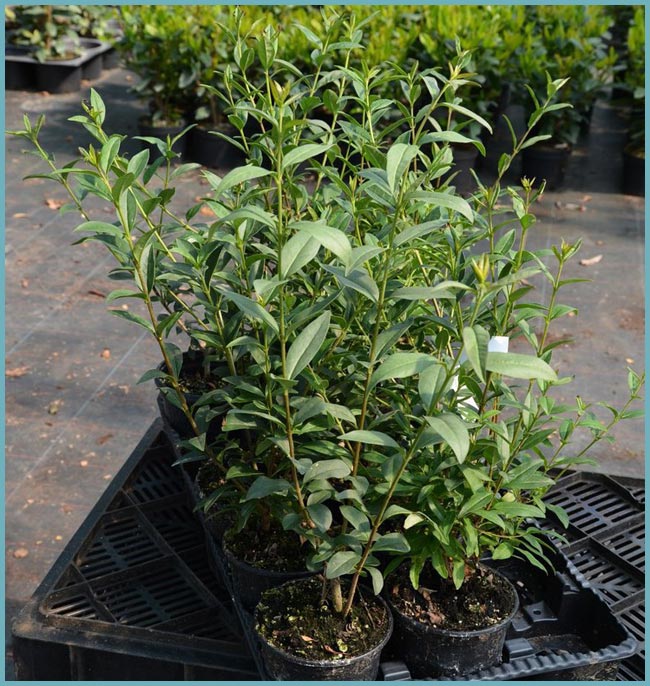

Privet saplings - Sometimes they do vaccination privet on the stem to create standard forms for landscape design. An adult privet standard tree looks very decorative, especially if variegated varieties are used for grafting.
Plant propagation
The plant propagates by seed, vegetatively. The seed method is very laborious and takes a lot of time. Shrubs grown from seeds will bloom only for 5-6 years. Seeds for planting are harvested in the fall, then soaked for several days in plenty of water. The floating seeds are thrown away, only those that have sunk to the bottom surface are sown. Seeds planted in the fall in the ground will sprout in a year.
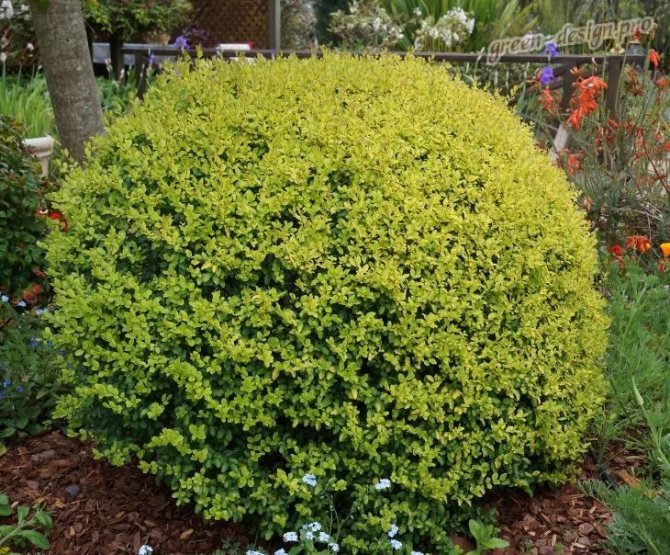

A faster way to grow is by planting cuttings. Planting material is harvested in the summer, after the end of the flowering period. For cutting, shoots are taken, about 10-12 cm long. They are planted in sod soil, covered with a layer of sand on top. During the rooting period, it is necessary to constantly maintain soil moisture. The stalk takes root in the crown of the head for two months. In the open ground, fathoms are transplanted after they reach 60 cm in height.
Elbows are an equally effective breeding method. For this purpose, they choose a young, healthy branch, tilt it to the ground, and fix it. The part of the shoot immersed in the ground is covered with soil. The soil at the location of the bend must be kept moist. Separate the rooted branch next spring.
Diseases and pests of ligustrum
Ligustrum is resistant to diseases and pests. The culture can occasionally be damaged by a scabbard or false shield. To prevent diseases, the crown of the bush is often sprayed with water in the summer months. A preventive shower will also save the plant from the attack of a spider mite.
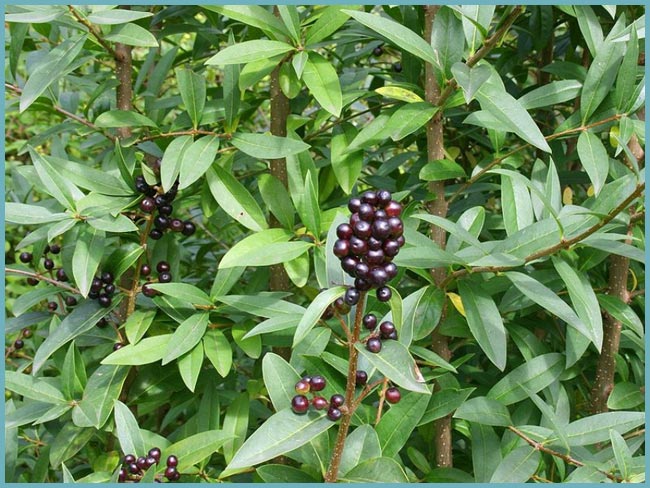

Inspect the crop regularly for pests
The plant can suffer from fungal diseases that develop from improper care. So with acidic soil, the leaves are covered with spots of a pale green color. Preventing the development of fungal infections will allow compliance with all the rules for growing ligustrum. In case of lesions with fungal infections, treatment of the bush with foundation will help to remove the infection.
In general, common buryuchina is a very hardy plant that perfectly complements the landscape of gardens and parks.

